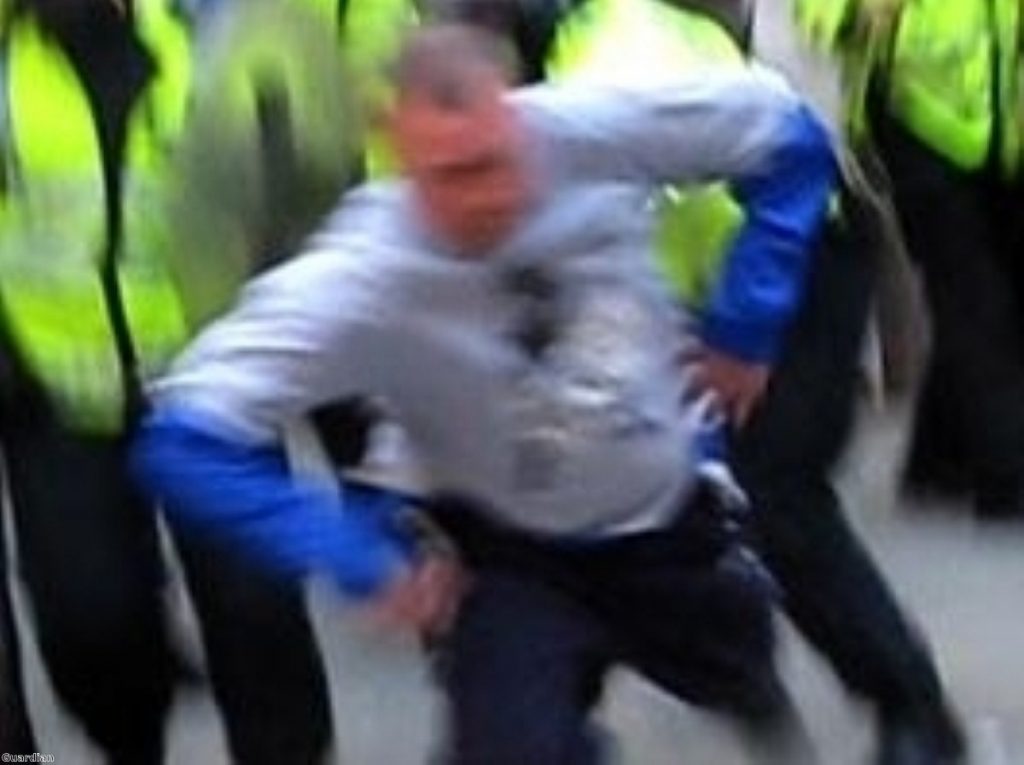Police officer found not guilty in Ian Tomlinson trial
The police officer who hit Ian Tomlinson with a baton and shoved him to the ground has been found not guilty of his manslaughter.
After days of deliberation, the jury at PC Simon Harwood's trial accepted the defence's argument that he had been using reasonable force against the newspaper vendor.
Tomlinson's family burst into tears when the verdict was read out and quickly left. On the steps outside the court, they told the press they would pursue a civil case.
"This is not the end, – we are not giving up on justice for Ian," the family said in a pre-prepared statement.


"There has to be one formal and final answer to the question 'who killed Ian?'. We will now pursue this in the civil court."
Paul King, Tomlinson's step-son, describes the verdict as "a joke".
Harwood sat impassively in court, but his wife later wept as she embraced him following the verdict. He later left court without addressing the media.
The jury ultimately took 18 hours and 45 minutes to reach a verdict.
They were not allowed knowledge of Harwood's previous behaviour as a police officer. But it can be revealed after the trial that he has faced ten allegations of wrongdoing during his career, including excessive force, unlawful arrest and discreditable conduct.
The officer's disciplinary history included allegations he throttled, punched, kneed and unlawfully arrested people.
An Independent Police Complaints Commission (IPCC) report from 2009 was also finally published and instantly raised questions about why the Met hired the officer.
IPCC commissioner Deborah Glass branded his re-employment "simply staggering" and said the Metropolitan police had questions to answer.
The Met promised the officer would now face disciplinary hearings.
Deputy assistant commissioner Maxine de Brunner said: "It is clear that insufficient recording and checks meant that detailed information regarding the officer's misconduct history was not shared at key points. We got that wrong.
"Following the conclusion of the trial of PC Harwood, we will now need to review the misconduct case against him.
"Our sympathies are with the family of Mr Tomlinson."
There have now been two jury decisions into Tomlinson's death. Fourteen months ago, a verdict of unlawful killing was passed in an inquest into the death, based on the same burden of proof.
The Tomlinson death, near the Royal Exchange Buildings in the City of London in April 2009, led to a revision of police tactics in major public order events.
While the controversial tactic of 'kettling' was maintained, tougher law enforcement measures were cut back. Some commentators blamed the cultural change for the student and anarchist riots in central London which took place in the years that followed.
The 47-year-old managed to walk several yards after being struck by a baton by Harwood, 45, and being shoved to the ground. He then collapsed before dying in hospital from internal injuries.
The police were heavily criticised in the aftermath of the events for putting out misleading statements about being prevented from accessing the body due to a projectiles being thrown by protestors.
Later video footage showed demonstrators trying to help the newspaper vendor as he lay on the floor.
Harwood argued that while he recognised he "got it wrong" in his treatment of Tomlinson, his behaviour could be justified in the context of the disorder taking place that day.
Since 1990, 1,433 people have died following contact with the police, but no officer has ever been convicted of manslaughter.












